White Rose DTP Advanced Methods Showcase
Agent-Based Modelling
Nick Malleson
University of Leeds, UK
n.s.malleson@leeds.ac.uk
Slides available at:
www.nickmalleson.co.uk/presentations.html


Overview
Introduction to ABM
Aggregate v.s. Individual-Based Modelling
Modelling Theory, Geography, Behaviour and Emergence with ABM
Challenges
ABM Example: Simulating daily mobility
Discussion

Introduction to ABM
Aggregate v.s. Individual
'Traditional' modelling methods work at an aggregate level, from the top-down
E.g. Regression, spatial interaction modelling, location-allocation, etc.
Aggregate models work very well in some situations
Homogeneous individuals
Interactions not important
Very large systems (e.g. pressure-volume gas relationship)

Introduction to ABM
Aggregate v.s. Individual
But they miss some important things:
Low-level dynamics, i.e. “smoothing out” (Batty, 2005)
Interactions and emergence
Individual heterogeneity
Unsuitable for modelling complex systems
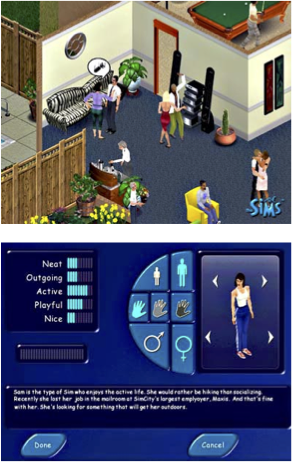
Introduction to ABM
Systems are driven by individuals
(cars, people, ants, trees, whatever)
Bottom-up modelling
An alternative approach to modelling
Rather than controlling from the top, try to represent the individuals
Account for system behaviour directly
Autonomous, interacting agents
Represent individuals or groups
Situated in a virtual environment

Attribution: JBrew (CC BY-SA 2.0).
Why ABM?
Emergence
"The whole is greater than the sum of its parts." (Aristotle?)
Simple rules → complex outcomes
E.g. who plans the air-conditioning in termite mounds?
Hard to anticipate, and cannot be deduced from analysis of an individual
ABM uses simulation to (try to) understand how macro-level patterns emerge from micro-level behaviours
Why ABM?
Better Representations of Theory
Example: Crime theories emphasise importance of ...
Individual behaviour (offenders, victims, guardians)
Individual geographical awareness
Environmental backcloth
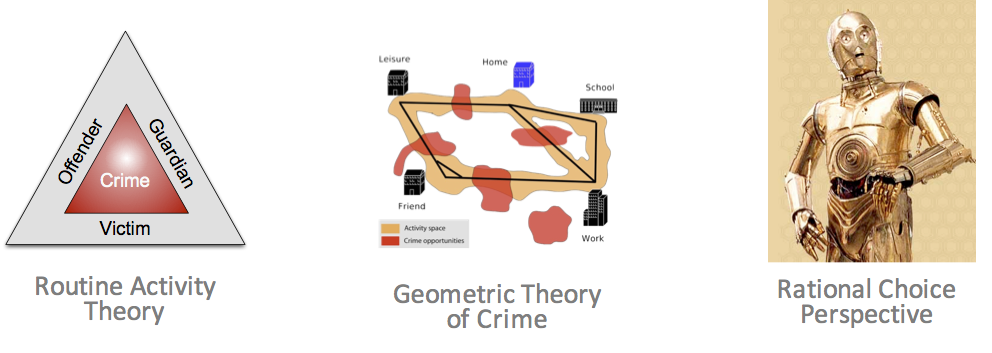
Why ABM?
Better Representations of Space
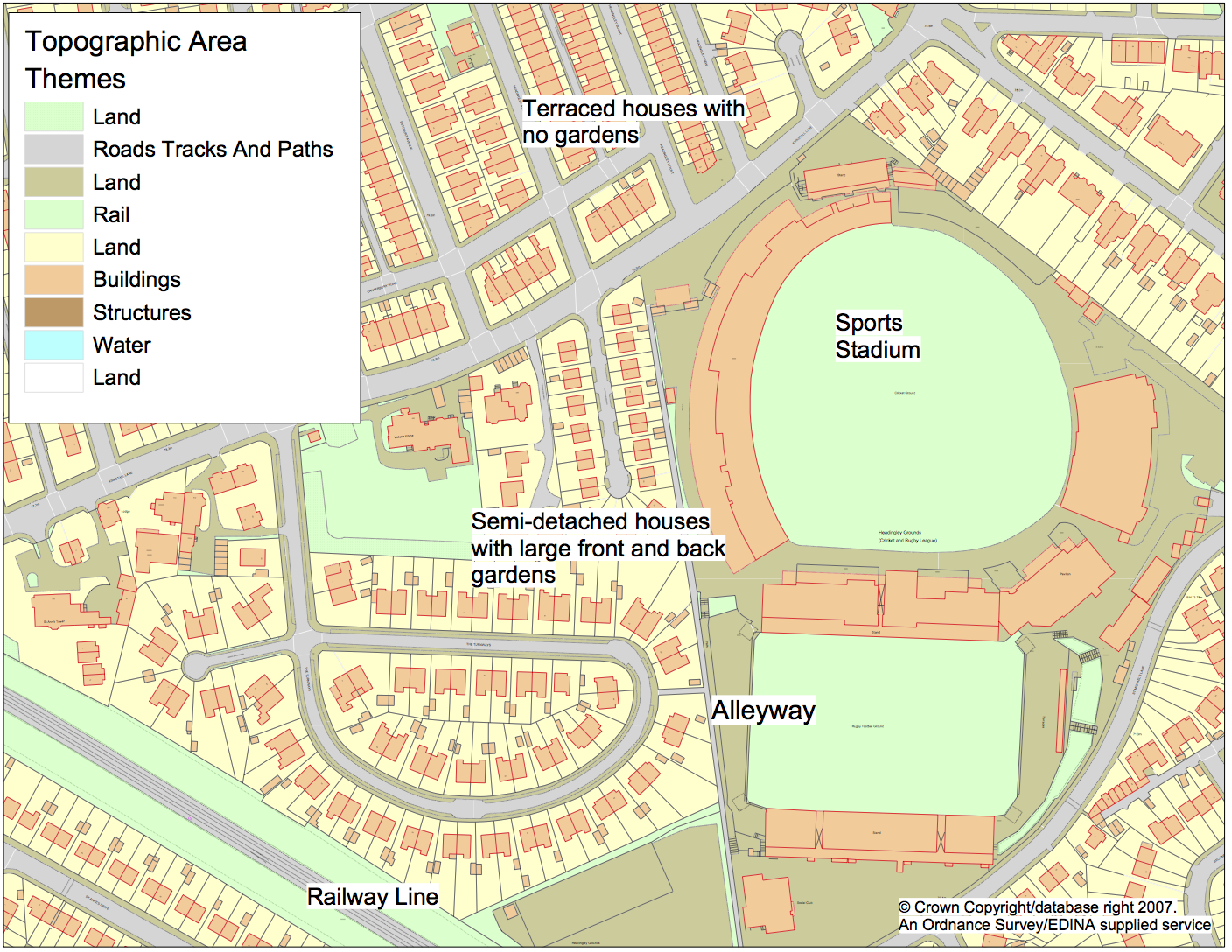
Micro-level environment is very important
Can richly define the space that agents inhabit
More Natural Description of a System
Describe the entities directly, rather than using aggregate equations
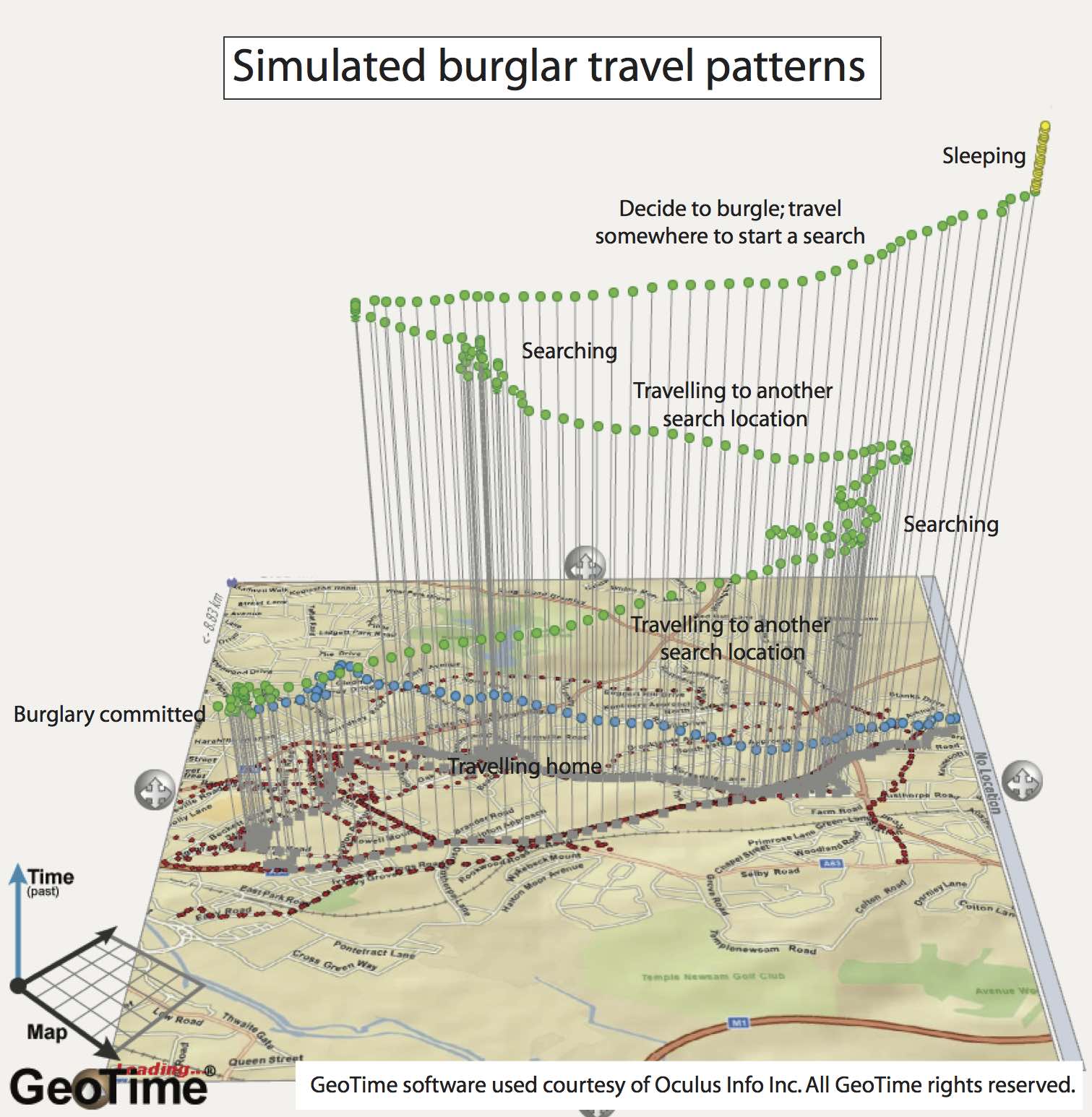
Why ABM?
History of the Model Evolution
Rather than returning a single result, the model evolves
The evolution itself can be interesting
Analyse why certain events occurred
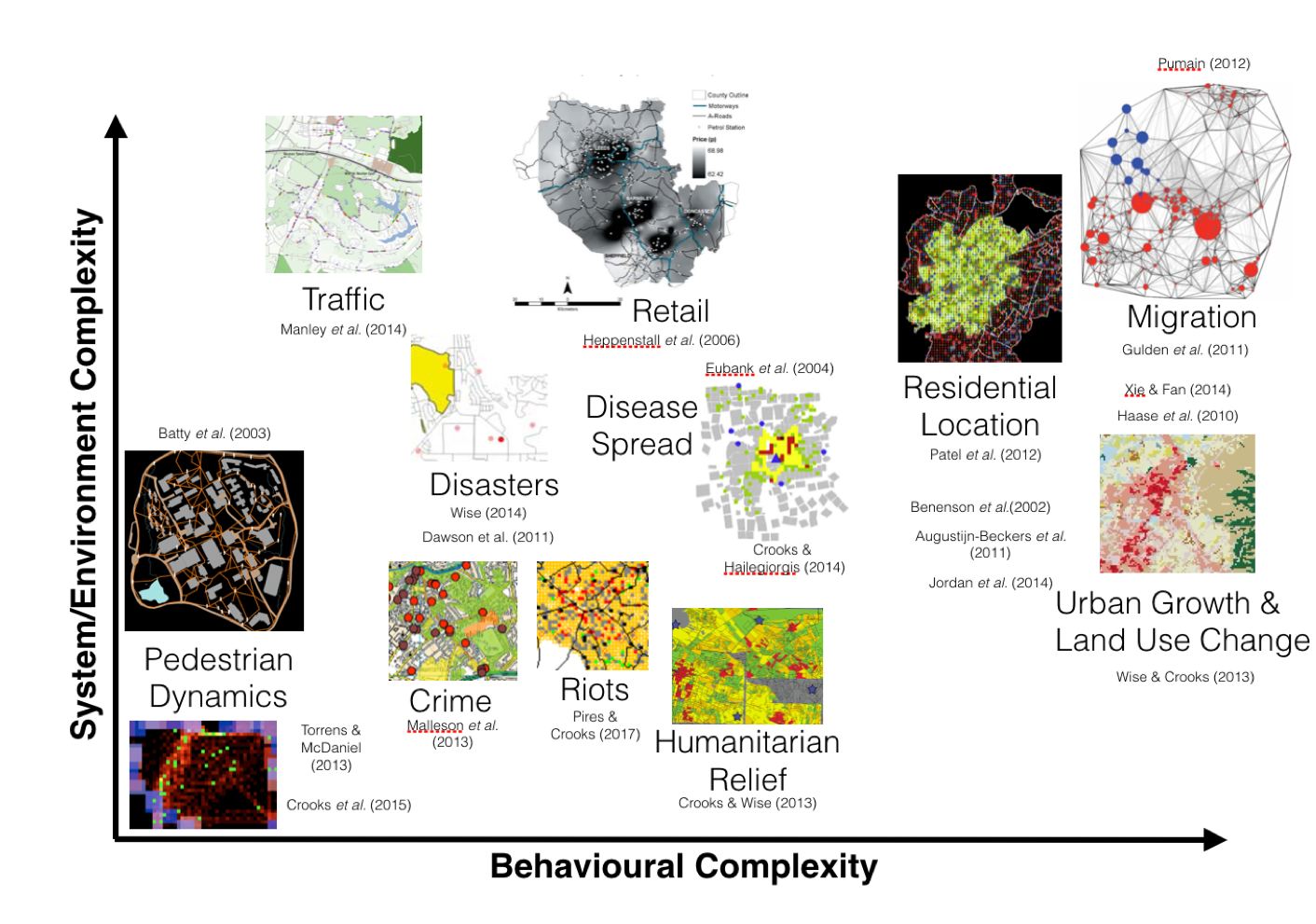
An experiment:
Choose a number between 1 and 4 (inclusive)
Were you able to chose a number at random?
Or did most people choose the number 3?
Modelling agent behaviours
Many behaviours are hard / impossible to model
Choose those that are the most important. Cannot include everything!
Some can be very simple - e.g. threshold-based rules (Kennedy, 2012) are common (Birks et al. 2012, 2013; Dray et al. 2008; Groff 2007a,b; Hayslett-McCall, 2008)
IF hunger IS ABOVE hunger_threshold THEN search_for_food
OTHERWISE do_something_else
More advanced cognitive frameworks exist
Beliefs, Desires, Intentions (Bratman et al., 1988)
PECS (Schmidt, 2000).
Reinforcement learning (watch this space)
ABM Predictive Example
Awareness space test
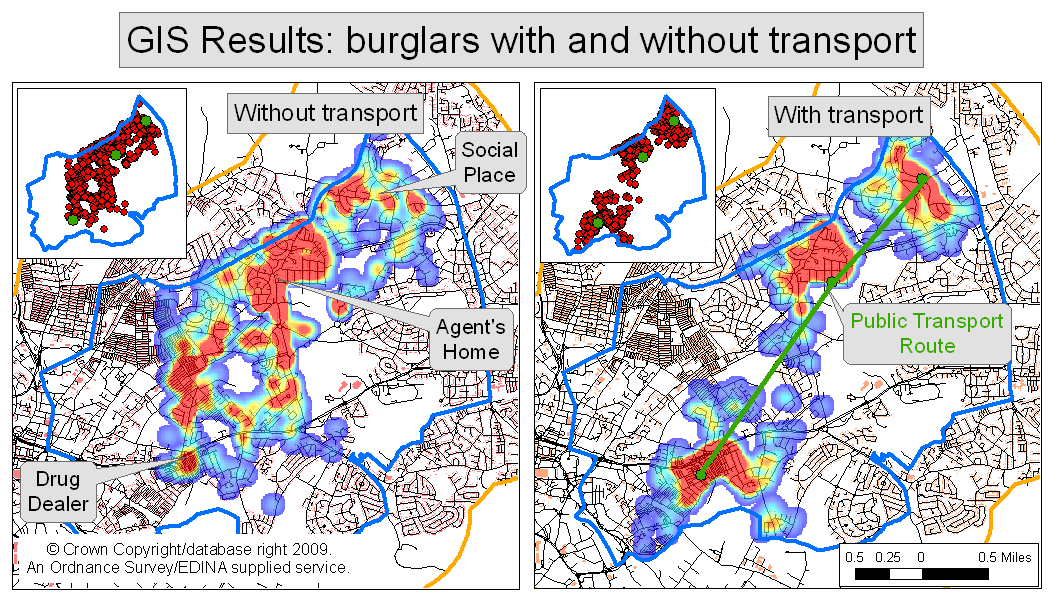
Agent-Based Modelling - Difficulties

(actually he played with his trains...)
Tendency towards minimal behavioural complexity
Stochasticity
Computationally expensive (not amenable to optimisation)
Complicated agent decisions, lots of decisions, multiple model runs
Modelling "soft" human factors
Need detailed, high-resolution, individual-level data
Individual-level data
ABM Example:
Simulating Urban Mobility
Motivation: better models of daily urban dynamics by combining diverse data and simulation
Simulating Urban Flows (surf) and Data Assimilation for Agent-Based Modelling (dust) projects
Crols, T., and N. Malleson (2019) Quantifying the Ambient Population Using Hourly Population Footfall Data and an Agent-Based Model of Daily Mobility. GeoInformatica DOI: 10.1007/s10707-019-00346-1.
Malleson, N., K. Minors, Le-Minh Kieu , J. A. Ward , A. West and A. Heppenstall (2020) Simulating Crowds in Real Time with Agent-Based Modelling and a Particle Filter. Journal of Artificial Societies and Social Simulation (JASSS) 23 (3). http://jasss.soc.surrey.ac.uk/23/3/3.html DOI: 10.18564/jasss.4266
Simulating Urban Mobility
Wi-Fi footfall counters. Case study: Otley, West Yorkshire
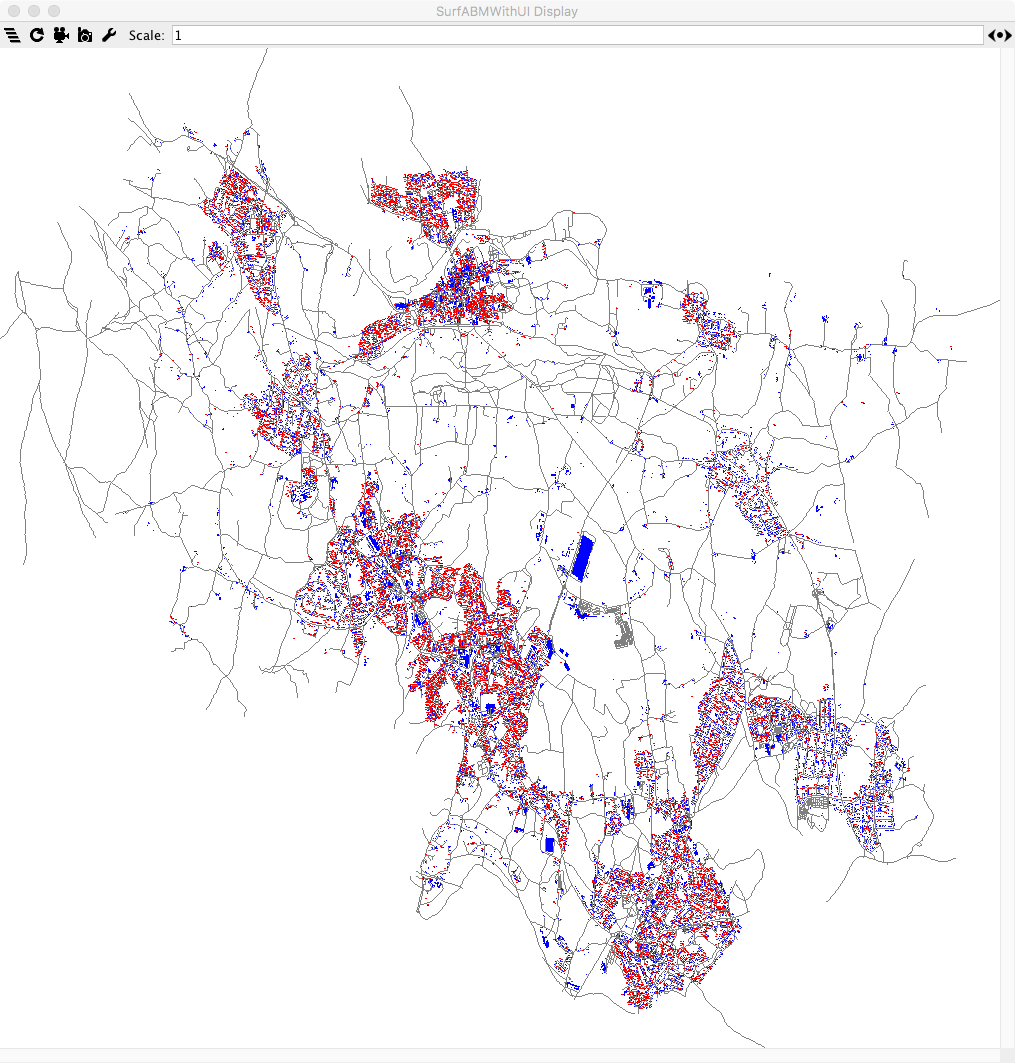
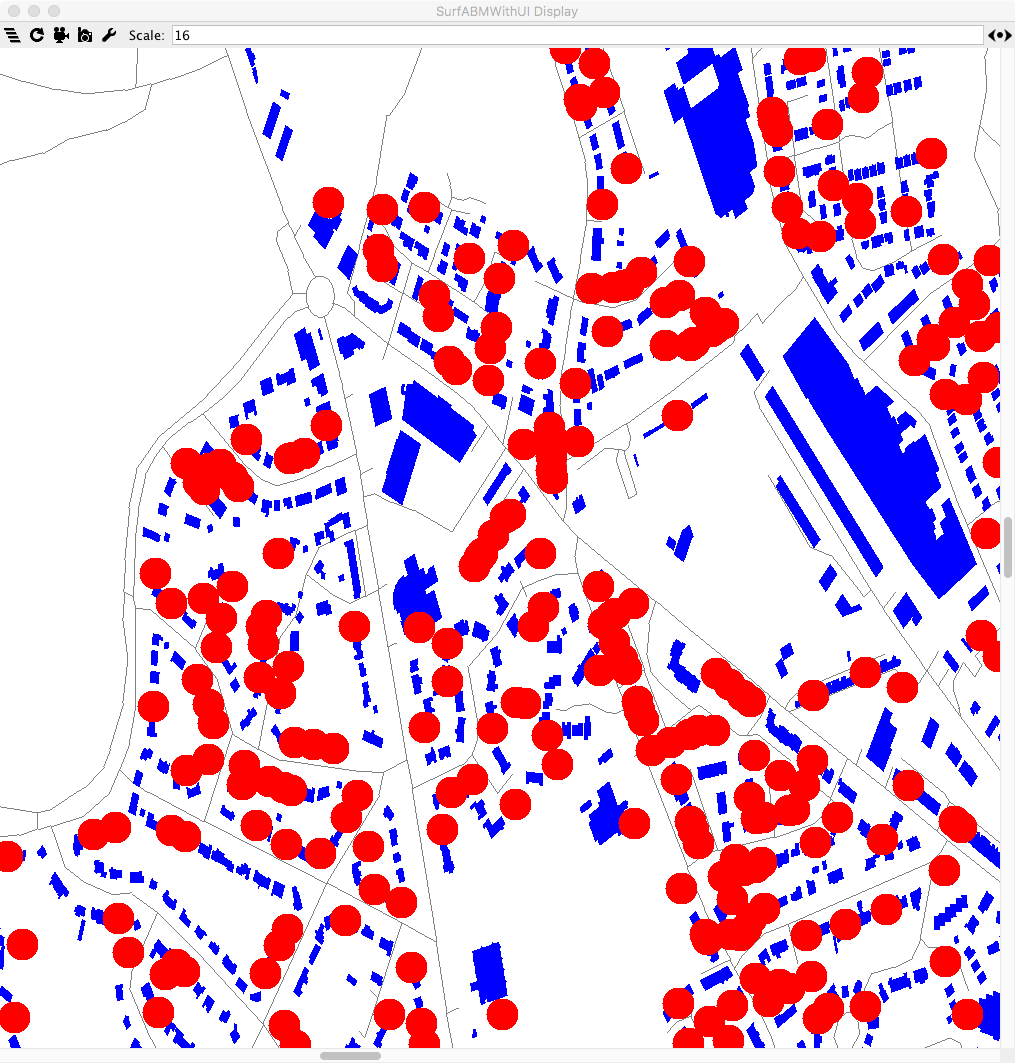
Simulating Urban Mobility
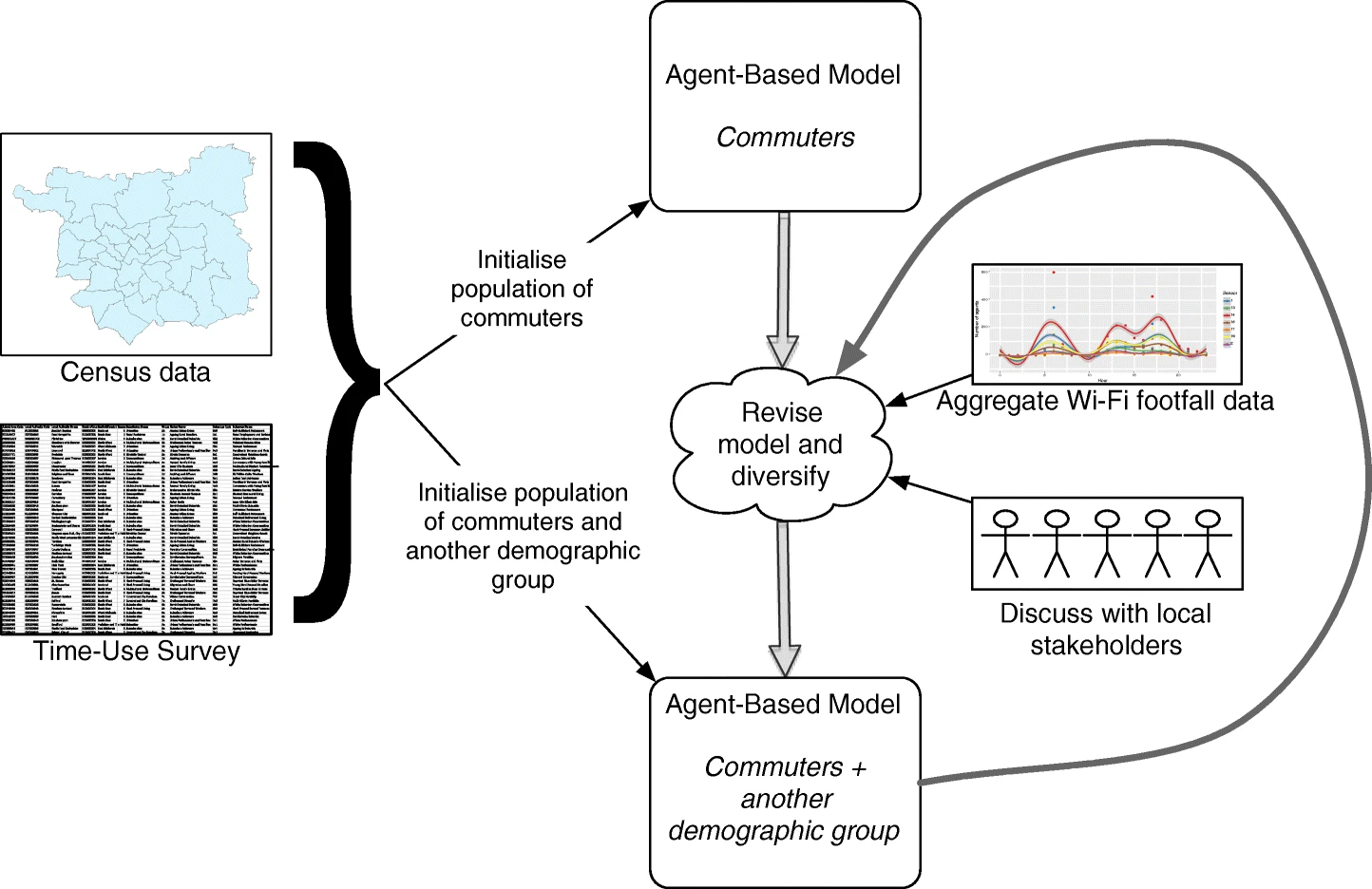
Simulating Urban Mobility: Results 1
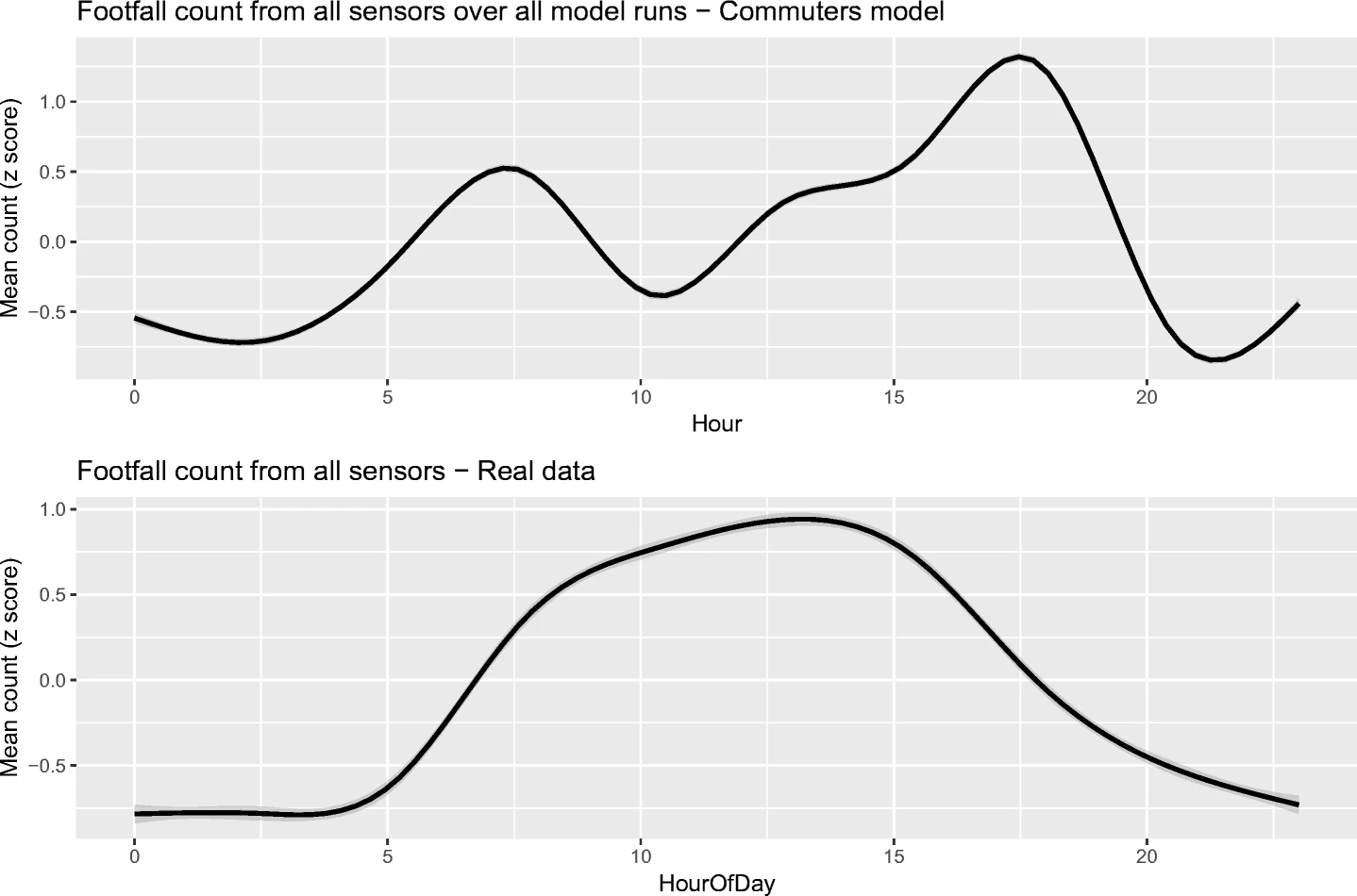
Simulating Urban Mobility: Results 2
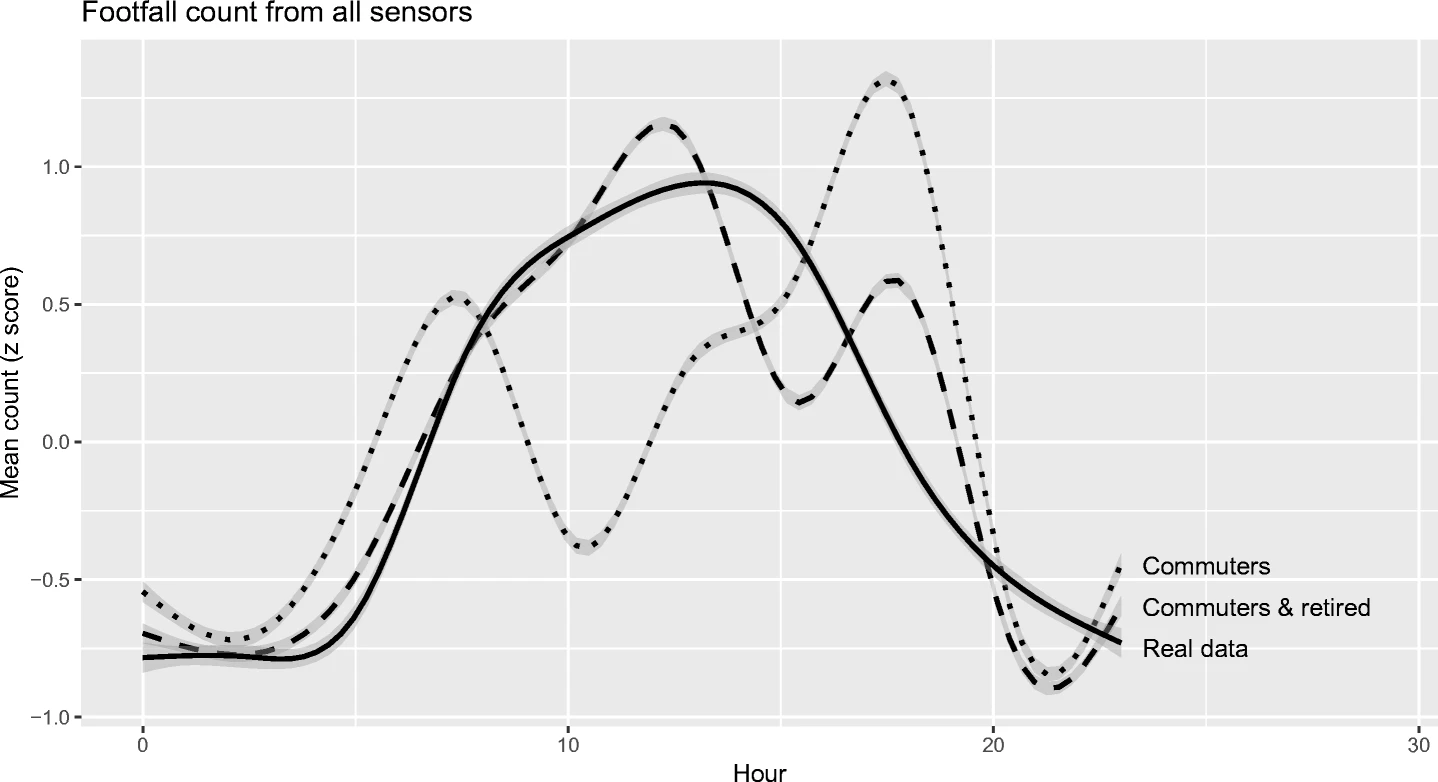
Next steps: real-time model updating
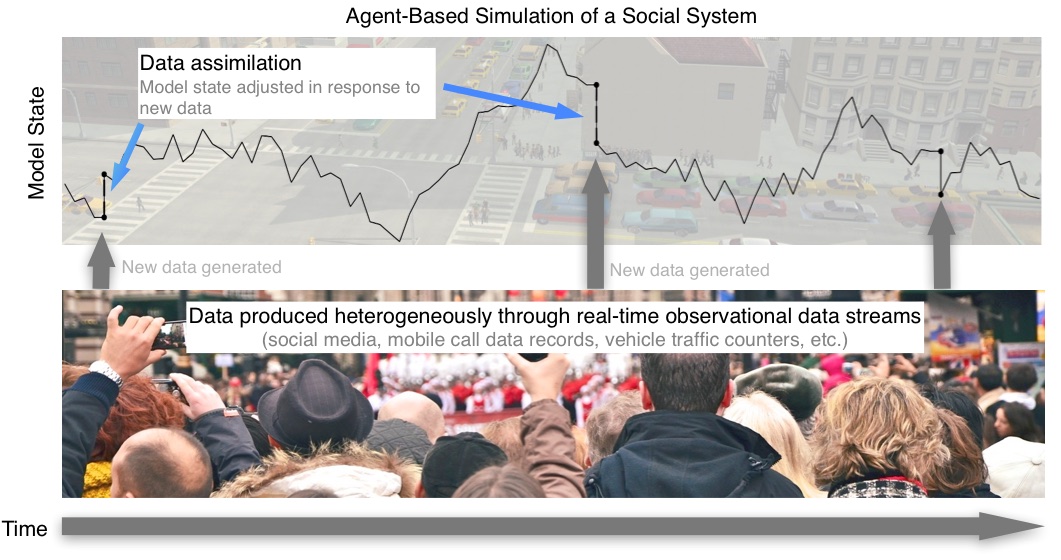
Data Assimilation for Agent-Based Modelling (dust.leeds.ac.uk)
Next steps: digital twins...
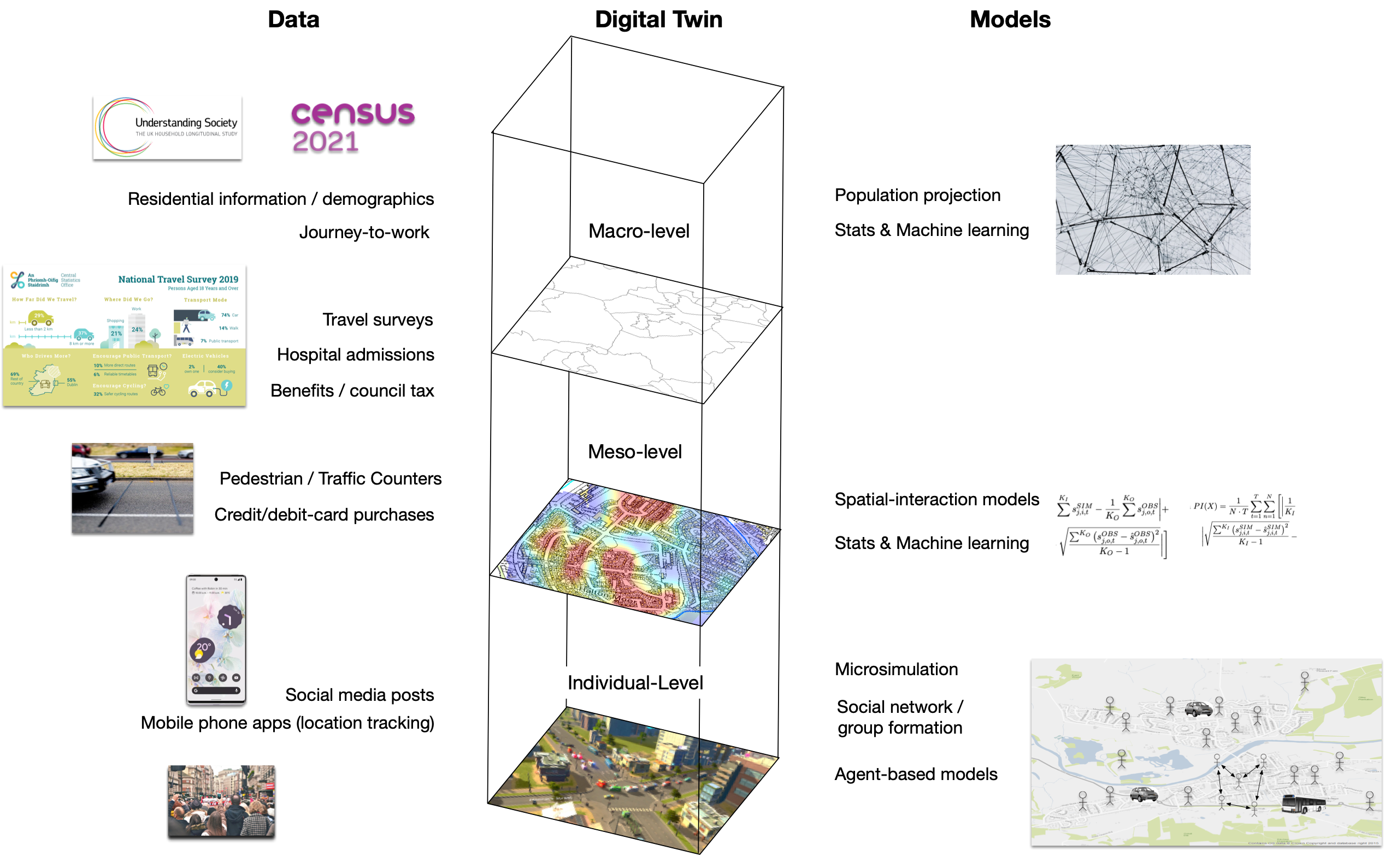
If you want to learn more ...
Why Model? (Epstein, 2008)
Generative Social Science (Epstein, 2007)
How to build and use Agent-Based models in social science (Gilbert & Terna, 2000)
Validation and verification of Agent-Based Models in the social sciences (Ormerod & Rosewell, 2009)
Agent based models in Python: Intro to Mesa (free tutorial on Complexity Explorer)
Fundamentals of NetLogo (another free tutorial)
Summary
Introduction to ABM
Aggregate v.s. Individual-Based Modelling
Modelling Theory, Geography and Emergence with ABM
Modelling behaviour
Challenges
ABM Example: Simulating daily mobility
Discussion
White Rose DTP Advanced Methods Showcase
Agent-Based Modelling
Nick Malleson
University of Leeds, UK
n.s.malleson@leeds.ac.uk
Slides available at:
www.nickmalleson.co.uk/presentations.html

